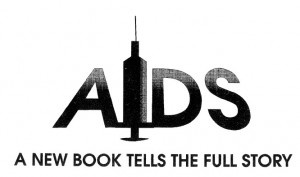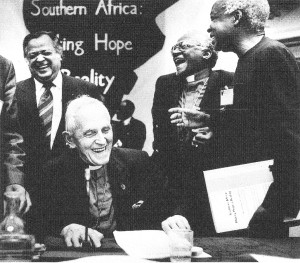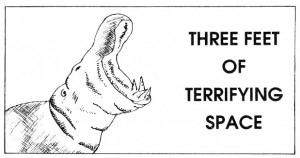
In the late 1980’s the Government of Tanzania, the World Health Organisation (WHO) and the World Bank undertook a ‘TANZANIA – AIDS ASSESSMENT AND PLANNING STUDY’ designed to assess the current status of AIDS in the country, likely future developments and prospective demographic, economic and other impacts of the epidemic and to examine the options available for doing something about it.
More than twelve consultants took part and a series of desk and field studies were followed by a mission to Tanzania in April-May 1991. The results have been published as a book (161 pages) by the World Bank and represent one of the most comprehensive and fact-filled contributions yet produced on the menace which AIDS represents. We asked a doctor to review and summarise its main features:
ORIGIN
In 1983 the first suspected case of Acquired Immune Deficiency Syndrome (AIDS) was diagnosed in the Kagera Region. Extensive spread of the Human Immunodeficiency Virus (HIV) was taking place in the late 1970’s and early 1980’s. By the end of 1990 a cumulative total of 21,175 AIDS cases had been reported in the country. However, it was believed that due to under reporting the true figure to end 1990 was 100,000.
In the 1980’s malaria was the major cause of death – about 10,000 annually. Malaria, respiratory infections and diarrhoeal disease accounted for over half the diagnosed health problems, a pattern typical of Africa due to widespread poverty and lack of proper water supply and sanitation. Sexually transmitted diseases (STD’s) were among the top ten causes of morbidity. Gonorrhoea was rated the sixth most frequently reported disease. 13-15% of children died before their fifth birthday. Adult life expectancy was about 48 years. Adult mortality rate prior to AIDS was 7 per thousand.
FACTS AND FIGURES FROM THE BOOK
– At the end of 1990 21,175 AIDS cases had been reported but the true figure was more likely to be about 100,000 because of under-reporting:
– life expectancy after AIDS diagnosis is about one year;
– about 800,000 Tanzanians are now HIV infected; the worst affected areas are Kagera, Mwanza and Mbeya regions and Dar es Salaam;
– by the year 2010 up to 1,500,000 people might be infected; population growth is likely to slow because of AIDS but the growth rate will remain positive;
– 20% of sexually active men and 15% of women in Tanzania have sexual partners other than their spouses; even greater proportions engage in commercial sex;
– 10% of Tanzania’s budget goes on health but this amounts to the equivalent of only US$2.00 per person.
When the AIDS epidemic was officially confirmed in 1985 an AIDS Task Force was set up by the Government with the help of the World Health organisation (WHO). In 1988 a National AIDS Control Programme (NACP) was inaugurated with a budget of US$11 million. This focused on three major areas: a) monitoring and research; b) prevention of HIV and STD infections; and, c)coping with AIDS patients and their dependants.
MEN AND WOMEN EQUALLY INFECTED
Men and women in Sub-Saharan Africa are equally HIV infected. However, there are large disparities among subgroups of the population. For example, in Kagera Region 17% of the urban population but only 5% of the rural population were HIV sero-positive. In half of mainland Tanzania 2.5% of the urban population and 1% of the rural population were seropositive.
80% of all sub-Saharan HIV infections are believed to result from heterosexual contacts. 10% are due to blood transfusions and perinatal infection. Contaminated needles may be responsible for 1% of HIV infections.
NO SURVIVAL BEYOND TWO YEARS
The conversion from HIV sero-positivity to full-blown AIDS takes from several months to 20 years. Current belief is that all infected persons will eventually die of AIDS unless an effective cure is discovered. The disease progresses rapidly among infants. 25% of perinatally infected infants develop AIDS before their first birthday and 80% by five years old, whereas only 15-20% of adults progress to AIDS in the first five years after infection. Once AIDS has developed, 80% of adults and 90% of children will be dead in one year. No AIDS victim is expected to survive more than two years. During the illness there are many episodes of painful and debilitating sickness – an average of 17 for adults and 6 for children.
CONTROLLING THE EPIDEMIC
The study recommends that the NACP should give the highest priority towards reducing heterosexual transmission of the virus – principally by prevention of STD’s, encouraging the use of condoms and the promotion of safe and responsible sexual practices through improvements in the associated Information, Education and Communication Programme (IEC).
The importance of preventing and controlling STD’s in the fight against AIDS has been recognised in Tanzania since 1984, yet by the end of 1990 no government or WHO money had been spent on an STD programme. Unfortunate indeed when one considers that genital ulcers, which enhance the spread of HIV, may well be the principal factor producing the heterosexual pattern of AIDS as seen in Africa. At the time of writing the report there were plans to establish STD clinics with funding from the EC, ODA and USAID. It was felt that these would not, however, represent a comprehensive national programme.
50 MILLION CONDOMS
A recent survey in Tanzania concluded that 20% of sexually active men and 15% of women had sexual partners other than their spouses. By the end of 1991 Tanzania had received 50 million condoms and had distributed 37 million.
KONYAGI AND CHARCOAL INSTEAD OF CONDOMS
Edna Ndejembi writing in the Dar es Salaam ‘Family Mirror’ brought a more down to earth approach to the problem after talking to long-distance lorry drivers and their lady friends in Dodoma. “Truck drivers are fantastic lovers, they offer good money and lovely presents, they are just the best” one lady was quoted as saying. To avoid AIDS she normally takes a solution of charcoal powder every morning. A truck driver also had his own remedy. “For my permanent lovers that I trust I do not bother about preventive measures. I do not like condoms because they reduce sexual sensitivity. But for hit and run partners I always use cognac (Konyagi)”. He explained that he applied Konyagi to his organ before and after sex. Research conducted by the African Medical Research Foundation (AMREFO) in 1992 indicated that in Dar es Salaam 31% of long-distance truck drivers and 55.7% of their partners are HIV positive.
97% AWARE OF AIDS
The report criticises the IEC Programme as being less effective than it should have been – partly due to under funding. However, the preliminary report of a large survey showed that 97% of people were aware of AIDS and its most salient features. But only 39% knew that one could be infected with the virus but not have any symptoms. The report recommends that ‘the IEC programme should be given new life’.
FUTURE PROJECTIONS
The Chin-Sonnenberg projection model has estimated that there will be 125,000 AIDS cases by 1992 (80,000 adults and 45,000 children) with 10% HIV seroprevalence among urban adults and 6% among rural adults. A 10% seroprevalence implies doubling the death rate in the 15-49 age group. Longer term projections take into account the possible effect of preventive programmes. The Bulato models (15% and 45% sexual monogamy) anticipate results as follows (in millions):
…………………………………..15% monogamy, 45% monogamy
Cumulative AIDS cases Year 2000: 1.99, 0.55
Cumulative AIDS cases Year 2010: 6.40, 1.99
Cumulative AIDS deaths Year 2000: 1.60, 0.45
Cumulative AIDS deaths Year 2010: 5.60, 1.70
COSTS AND ECONOMIC IMPLICATIONS
The treatment costs (1991) per AIDS case were US$290 for an adult and US$195 for a child. Each adult AIDS case required on average 280 days of care including home care. In the year 1991 estimated total AIDS health care costs were $27.26 million. In that year the government allocated $58.29 million (10.9% of the national recurrent budget) towards total health care. Clearly the full treatment of AIDS patients, would have had an alarming effect on other aspects of health care, that is on the 80-90% of the population not infected with HIV. Added to the cost of treating and caring for AIDS patients are the costs of caring for orphan survivors. The government will have hard budgetary decisions to make. The government recently reported that the estimated cost of the NAP programme for the period 1992 to 1997 would be $63 million of which external pledges for $43 million had been registered.
The AIDS epidemic, producing an alarming decline in the health of the population and a geometrically growing increase in the mortality of sexually active adults will undoubtedly have major effects on the economy reduced labour productivity , increased health care expenditure and a reduction in human investment.
Now that AIDS has reached pandemic proportions in Africa there is need for a special WHO service in the region to co- ordinate the AIDS prevention and control programme. As catering for surviving dependants could be considered a basic humanitarian act it would be appropriate for this to be financed by NGO’s. Though care should be taken not to select out AIDS family survivors while neglecting other orphans – in the Kagera district more than 5,600 children are thought to have been orphaned by 1991 due to AIDS; yet for every AIDS orphan there were eight who had lost one or both parents due to other causes.
At a time of world recession African countries are facing a great crisis – and there is worse to come! African countries, International agencies and donor countries must make greater efforts to prevent a catastrophe.
Oliver Murphy
(More up-to date data has been given in ‘World Bank News’ dated November 24,1993. 816 households in Kagera Region were sampled during a recent Bank research project. 16% reported having lost an adult member during the past year of whom more than half were thought to have died from AIDS. Economic effects included children less likely to be in school, affected families more likely to be headed by a woman with more ‘dependants’ or children per adult to take care of. On average, households spent US$60 on medical and funeral expenses for each death – roughly the average annual income in the area. Of 2,250 children under 15 in the sampled families, 130 had lost both parents, 185 had lost their mother and 368 had lost their father. The author pointed out that this Tanzanian study might overstate the effects of AIDS because the families sampled were generally at a higher risk of losing adult members to fatal illnesses – a point made in another view of AIDS in Tanzania which is described below – Editor)
BUT OTHERS DISSENT
Not everyone agrees with the widely accepted interpretation of the AIDS epidemic in Tanzania outlined above and during recent weeks massive international publicity has been given to an entirely different point of view. In March there was a British TV programme based on the situation in parts of Uganda and Tanzania and then, the Sunday Times (October 3, 1993) devoted part of its front page and two inside pages to articles by Neville Hodgkinson under the headings ‘AFRICAN AIDS PLAGUE A MYTH’ and ‘THE PLAGUE THAT NEVER WAS’.
The evidence was said to have come from two French charity workers Philippe (50) a former pilot, and Evelyne (42) Krynen, a teacher working in what was described as the ‘epicentre’ of the disease – Kagera Region in Tanzania.
After a first visit to Bukoba and its surrounding area they prepared an illustrated report which was to prove a catalyst for French and Belgian interest in the social impact of AIDS in Africa. They wrote of children alone in houses emptied of adults, a football team destroyed by the disease, old people sitting alone with their dead, black crosses painted at the entrances of AIDS-stricken homes.
The Krynen/s then abandoned their previous careers to train as nurses specialising in tropical medicine and came back to Tanzania to head the first and largest AIDS organisation for children in Tanzania – ‘Partage’. Today this charity has 230 full-time employees helping 7,000 children in 15 of Kagera’s villages.
“THERE IS NO AIDS”
Among the startling conclusions the Krynen’s have come to as a result of four years work in the area are the following: – one positive test cannot be relied upon for HIV diagnosis; a wide variety of parasitical and other infections can trigger a false positive result;
– there is no connection between HIV-positivity and risk of illness; 54 villagers were ill with complaints such as pneumonia and fungal infections that might have contributed to an AIDS diagnosis but just as many of these were HIV-negative as positive; when they were given appropriate treatment, most recovered;
– there is not a trace of evidence of the disease being sexually transmitted;
– the HIV test has nothing to do with AIDS;
– there is no AIDS; it is something that has been invented:
WHERE HAVE ALL THE ORPHANS COME FROM?
The Sunday Times article then asked, if Kagera is not in the grip of ‘HIV disease’, where have the thousands of orphans come from? The answer say the Krynens, is that most of the children are not orphans at all. “The raising of children by their grandparents is a long standing feature of the culture of the region, Parents move away from the region, sending back a little money and returning occasionally or never: other children are born to prostitutes. When parents are absent it is fashionable to say that they have died of AIDS because this brings money and support. Everybody claims to be a victim of AIDS nowadays. Local people working for AIDS agencies have become rich … the children usually thrive once they are properly fed and cared for though some are so poorly from birth that they remain vulnerable to infections. In all the children we have lost there was a very good reason – heart failure, TB treated too late, cerebral malaria, acute hepatitis – you have no right to call any of these deaths AIDS … there are now some 17 organisations reportedly doing something about AIDS in Kagera … today as the ferry arrives from Mwanza the port seizes up with donor agency Landrovers and Toyotas … Africa is a ‘good conscience’ ground for many charities”.
(In the light of the above we asked a specialist at the London School of Hygiene and Tropical Medicine to comment – Editor)
‘NAIVE VIEWS’
When the science correspondent of a serious newspaper decides to write a two page article on AIDS in Africa, one would expect that he would interview a wide variety of experts in the field, and publish a balanced account of what they tell him. Neville Hodgkinson, has not adopted this approach.
It is true that he has interviewed a number of scientists and doctors working on AIDS in Africa, but he has chosen not to report their views, confining his article to the opinions of a former French army pilot and teacher. This couple went to work in Bukoba after receiving one year’s training in nursing, and tested about 800 local residents for HIV infection.
They told Mr. Hodgkinson that their tests had not proved reliable, apparently on the grounds that a number of those with positive tests were in good health, and a number of patients whom they saw with “pneumonia and fungal infections” had negative tests. They therefore decided “to put all they had been told about the disease (AIDS) in the garbage can, and tried to reconsider”. They admitted that they had seen patients dying of an unusual wasting disease, but concluded that it could not be sexually transmitted, since the sexual partners of these patients did not have the disease. Mr. Hodgkinson reported that his lady informant had told him: “I will spend a night with an HIV positive person, if he’s handsome enough.”
It is not surprising that there are people in Africa who hold the naive views expressed by this French couple. It is difficult for those without scientific training to grasp the concept of a disease with an incubation period which may extend to ten years or more. What is surprising is that the science correspondent of what was once a respected newspaper should report such nonsense when he knows it not to be true.
In June of this year Mr. Hodgkinson attended a press conference at the London School of Hygiene and Tropical Medicine, at which results were presented from a community study in Masaka District of Uganda conducted by the Uganda Virus Research Institute and the British Medical Research Council. This study, in which some 10,000 people were followed up for several years, found that the risk of death was 87 times higher in HIV positive than in HIV negative individuals.
Mr. Hodgkinson’s reasons for failing to report these and many similar findings of which he must be aware can only be guessed at. I find his article an insult to the many dedicated health workers in Africa who are trying to care for an increasing number of AIDS patients and to the memory of the hundreds of thousands of people who have died of HIV related diseases in Africa in the past decade; an impediment to research into ways of controlling this devastating epidemic; and a dangerous source of misinformation which may lead those who read it to put themselves needlessly at risk of disease and death.
David Mabey



